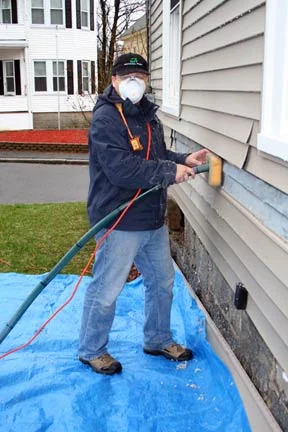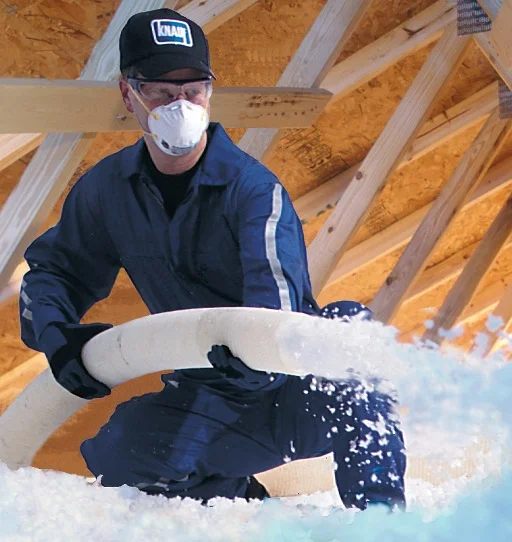Cellulose
Cellulose insulation is made using 80%+ over-issue newsprint (un-purchased daily newspapers) and other high-quality recycled paper. Along the way, a natural mineral borate (never ammonium sulfate) is added to the cellulose fiber, which provides our Class A fire rating and resistance to mold and pests. Our cellulose insulation has an R-value of 3.2-3.7 per inch (dependent on installation type).
Cellulose Comes In Two Styles:
Dense-Packed cellulose
Dense-Packed cellulose is for walls and enclosed ceilings. It’s density once it’s packed in a wall is more than twice it’s settled density. The installation process ensures that cavities are completely filled – no gaps, no voids, no pockets or spaces. Using 3.5 lbs. of material per cubic foot ensures that the material is under slight pressure in the wall cavity, leaving no room for the cellulose to settle.

Loose-Fill (AKA Blown-In) Cellulose
Loose-Fill cellulose for open floors is blown in and allowed to settle on its own. The deeper cellulose settles, the better the R-value. The “loose-fill” process can be performed with or without air-sealing. Air-sealing will however increase the effectiveness of the insulation.

Benefits of Cellulose Insulation
Higher R-value
Cellulose insulation is an efficient air locking method that prevents heat loss in homes up to 40% more than fiberglass insulation. The R-value of cellulose material averages 3.5 per square inch while fiberglass has 2.0 per square.
Safer
Cellulose insulation is made of paper and infused with a naturally occurring mineral, borate, an effective fire retardant. Borate gives cellulose a Class A fire rating, helping limit the spread of a fire and produces no smoke.
Quieter
Aside for the thermal efficiency, cellulose insulation can also provides very effective sound proofing, reducing external noise such as cars, aircrafts, push mower, etc. Cellulose insulation has a better the sound transmission coefficient rating than either fiberglass or foam, two of the most common insulating materials. That means a building insulated with cellulose will be very quiet.
Drier
The added borate in cellulose makes it a mold and mildew inhibitor to prevent moisture related issues.
Vermin Resistant
Borate is a non-irritant, non-toxic and allergy free agent that prevents vermin and insect breeding by causing their bodies to dehydrate when in contact with the cellulose insulation.
Environment Friendly
Cellulose uses 100% recycled newspaper fibers, paper that might otherwise end up in a landfill. Fiberglass has a maximum of 40% recycled content and foam products little or none. Fiberglass and foam residue are discarded in a landfill and won’t decompose.
